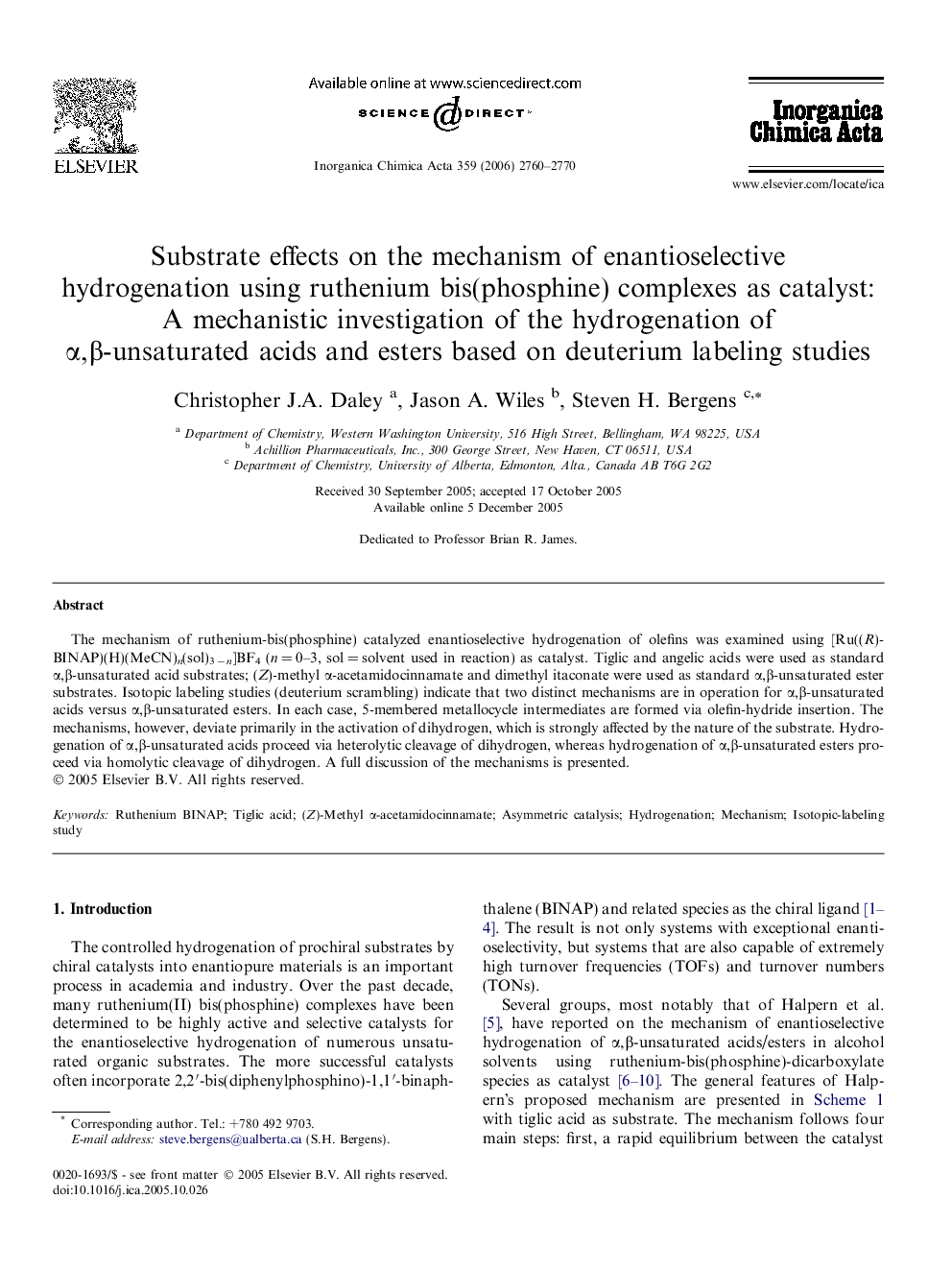| Article ID | Journal | Published Year | Pages | File Type |
|---|---|---|---|---|
| 1313014 | Inorganica Chimica Acta | 2006 | 11 Pages |
The mechanism of ruthenium-bis(phosphine) catalyzed enantioselective hydrogenation of olefins was examined using [Ru((R)-BINAP)(H)(MeCN)n(sol)3 − n]BF4 (n = 0–3, sol = solvent used in reaction) as catalyst. Tiglic and angelic acids were used as standard α,β-unsaturated acid substrates; (Z)-methyl α-acetamidocinnamate and dimethyl itaconate were used as standard α,β-unsaturated ester substrates. Isotopic labeling studies (deuterium scrambling) indicate that two distinct mechanisms are in operation for α,β-unsaturated acids versus α,β-unsaturated esters. In each case, 5-membered metallocycle intermediates are formed via olefin-hydride insertion. The mechanisms, however, deviate primarily in the activation of dihydrogen, which is strongly affected by the nature of the substrate. Hydrogenation of α,β-unsaturated acids proceed via heterolytic cleavage of dihydrogen, whereas hydrogenation of α,β-unsaturated esters proceed via homolytic cleavage of dihydrogen. A full discussion of the mechanisms is presented.
Graphical abstractThe mechanisms of ruthenium-bis(phosphine) catalyzed olefin hydrogenations are investigated using substrate studies, deuterium labelling, and stoichiometric reactions of catalytic intermediates..Figure optionsDownload full-size imageDownload as PowerPoint slide
